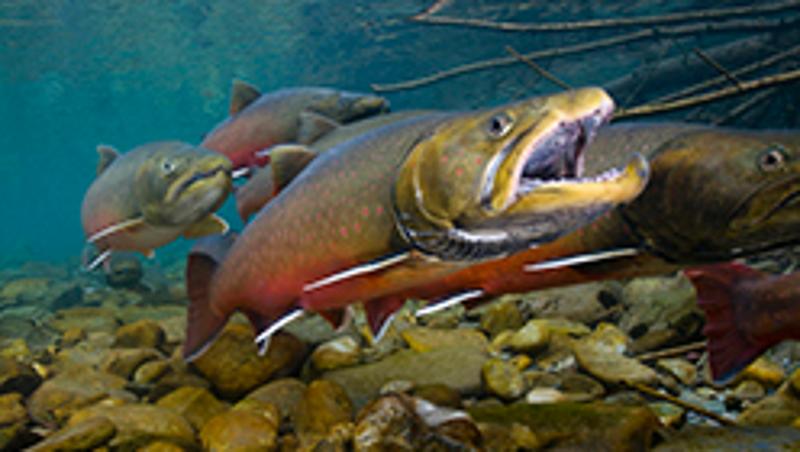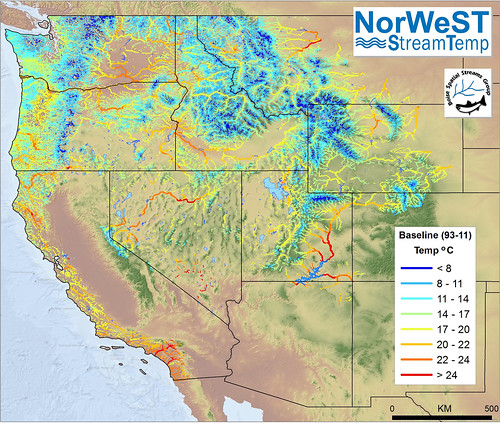
A new study on mountain streams offers hope for cold-water species in the face of climate change and is just the “tip of the iceberg” for global environmental monitoring, according to a QUT researcher.
The findings have been published in Proceedings of the National Academy of Sciences of the United States of America (PNAS).
QUT’s Institute of Future Environment Principal Research Fellow Erin Peterson was a co-author on the study led by Dr Dan Isaak at the US Forest Service Rocky Mountain Research Station, which used huge stream temperature and biological datasets to describe warming trends throughout a 222,000km network of mountain streams.
The study found that despite decades of climate change, warming rates and upstream shifts in thermal habitat in headwater mountain streams were slower than previously expected.
Dr Peterson said the research was important for environmental management.
Dr Peterson said this suggested many populations of cold-water species (eg. Bull Trout) would continue to persist this century and mountain landscapes would play an increasingly important role in that preservation.
"Temperatures appear to be warming slowly enough that many populations should be able to move upstream along with shifts in suitable thermal habitats, as long as barriers don't impede their movement," Dr Peterson said.
"Of course, temperature is not the only aspect of habitat that affects their survival, but it's extremely important since these fish can't self-regulate their body temperatures like we do."
She said the collaboration between scientists from different disciplines and use of spatial statistics had changed the way freshwater streams were modelled and managed in the US.
Dr Peterson and Dr Jay Ver Hoef from the US National Oceanic and Atmospheric Administration developed spatial statistical models and geographic information system tools that allow you to make much more accurate predictions of the temperature within a stream network.
“Once large stream temperature datasets were assembled and the actual rate of warming was measured, the actual rate of stream warming turned out to be much lower than previous tests,” she said.
The spatial scientist, also based in Brisbane with the ARC Centre of Excellence for Mathematical and Statistical Frontiers, said the research was unique as it was completed on a shoestring budget.
“Dozens of agencies had stream temperature sensors deployed over small areas so when we brought it all together it created a massive network that spanned the western US,” Dr Peterson said.
“This allowed us to use cutting-edge statistical models to make predictions of stream temperature, at one kilometre intervals in all fish-bearing streams, under different climate change scenarios all based on existing data.”
Dr Peterson and her collaborators were also funded to create a common national-scale stream analytical infrastructure so spatial statistical models can be easily applied to existing stream databases anywhere in the US, thereby making large data mining exercises routine.
Dr Peterson said the project allowed scientists to ask biological management questions she had never dreamt of when the research first began.
“When scientists from different disciplines really work together we can make exciting break throughs that would never be possible working alone,” she said.
“This is just the tip of the iceberg when it comes to environmental monitoring and modelling in Australia and overseas with new sensors being developed to create massive amounts of environmental data.”
But she warned it wasn’t enough to simply collect data with the challenge to convert the data to useful management information.
“I definitely see statisticians and spatial scientists playing a key role in tackling some of the most important and interesting environmental challenges of our time.”
The image below is supplied via PNAS and provides up-to-date model predictions.
The study is entitled; “Slow climate velocities of mountain streams portends their role as refugia for cold-water biodiversity ”.
The study’s authors include Dr Daniel Isaak, lead author from the U.S. Forest Service Rocky Mountain Research Station; Dr Michael Young, Dr Charles Luce, Dona Horan, Matt Groce and David Nagel of the US Forest Service Rocky Mountain Research Station; Dr Steven Hostetler, US Geological Survey; Dr. Seth Wenger, University of Georgia; Dr Erin Peterson, Queensland University of Technology; and Dr Jay Ver Hoef, US NOAA Fisheries, Alaska Fisheries Science Center.
A pdf version of the research paper is available upon request.
Debra Nowland | media officer (Mon, Wed, Thurs) | QUT Marketing & Communication | 07 3138 1150 | d.nowland@qut.edu.au or media@qut.edu.au



